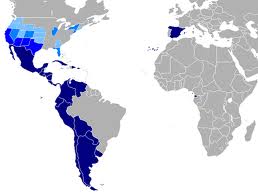by Laura Leotta*
 Today, Spanish is the mother tongue of over 400 million people, making it the second world language in terms of the number of native speakers. It is also the official language of 21 countries and logically the evolution of the Spanish language in each of those countries has led to a certain linguistic differentiation which involves a necessary adaptation of our texts depending on the country where the translation will be used.
Today, Spanish is the mother tongue of over 400 million people, making it the second world language in terms of the number of native speakers. It is also the official language of 21 countries and logically the evolution of the Spanish language in each of those countries has led to a certain linguistic differentiation which involves a necessary adaptation of our texts depending on the country where the translation will be used.
It is, however, rare that a translation order specify the country where the text will be used, despite the fact that many misunderstandings and pitfalls could be avoided if this information was systematically provided.
It is true that major international organisations or leading industrial or pharmaceutical groups increasingly ask for “international” Spanish which is as “neutral” as possible, so that it can be used both in Spain and in Latin American countries.
On the one hand, this type of text calls for significant experience in translation, preferably within a team of colleagues from different Spanish-speaking countries. On the other hand, it should be said that it is not always possible to write perfectly neutral texts, which can compel us to lean one way or the other taking into account various factors such as the target market of a text, the most widespread meaning of a word, etc.
In practice and even if this does not correspond to linguistic reality, the European translation market tends to distinguish the Spanish of Spain from that of Latin America, even if in some fields there is as much difference between Mexico and Argentina as between Mexico and Spain.
In fact, to be slightly more in touch with reality, one should at least be able to identify the difference between Spanish from Spain, Southern Cone Spanish (Argentina, Chile, Uruguay, Bolivia…), Caribbean Spanish (Colombia, Venezuela…), Spanish from Central America and Mexico and, finally, the Spanish spoken by the Hispanic community in the United States, which has over the years created its own codes and practices and which will be the largest Spanish-speaking community in the world by 2050!
Beyond the theoretical or ideological debates on actual or supposed correctness of language, we consider that it is always a good idea to “locate” a text to the greatest possible extent, i.e. to adapt it as much as possible to the country where it will be used, so that it can serve its intended purpose, namely that of being understood by its readers.
* Laura started her career as a freelance translator for five years. She then worked as a project manager in a large American agency where she was confronted with a wide variety of needs in terms of adapting texts to different Spanish-speaking countries. In our team, above and beyond continuing to deal with this type of request, she takes care of managing special requests (source languages we do not handle in-house, unusual formats…).



